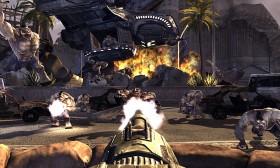Clash Royale - Emotes: Communication Strategy Impact - A Critical Review
Introduction
Clash Royale, developed by Supercell, is a highly competitive real-time strategy game that combines elements of tower defense and collectible card games. Beyond its core gameplay, one of the most distinctive features is its emote system, which allows players to communicate non-verbally during matches. While seemingly trivial, emotes play a significant role in player interaction, psychological warfare, and overall gaming experience. This article critically examines the impact of emotes as a communication strategy in Clash Royale, analyzing their influence on player behavior, sportsmanship, and competitive dynamics.
The Role of Emotes in Clash Royale
Emotes in Clash Royale are pre-designed animations featuring characters from the game, expressing emotions such as laughter, anger, or celebration. Players can use them to taunt opponents, celebrate victories, or even acknowledge good plays. Unlike text or voice chat, emotes are limited in scope but highly effective in conveying intent due to their visual and auditory cues.
1. Psychological Warfare
Emotes are frequently used as a mind game tactic. A well-timed "laughing king" or "crying face" can tilt an opponent, disrupting their focus. Studies in gaming psychology suggest that non-verbal cues, even in digital form, can trigger emotional responses, leading to mistakes or frustration. Some players deliberately spam emotes to provoke their opponents, creating a toxic environment.
2. Positive Sportsmanship
On the flip side, emotes can foster positive interactions. A "thumbs up" or "good game" emote at the end of a match promotes respect between players. Unlike toxic behavior, these gestures enhance the social aspect of the game, making competitive play more enjoyable.
3. Strategic Communication
In team-based modes like 2v2, emotes serve as unofficial signals. While Clash Royale lacks direct communication tools, players often use emotes to coordinate attacks or warn teammates of incoming threats. This indirect communication adds a layer of strategy beyond the game’s mechanics.
The Controversy Surrounding Emotes
Despite their benefits, emotes have sparked debates within the Clash Royale community.
1. Toxicity and BM (Bad Manners)
Many players argue that emotes encourage BM (Bad Manners), where opponents excessively taunt after winning. Supercell has attempted to mitigate this by allowing players to mute emotes, but the debate continues over whether emotes should be restricted further.
2. Monetization and Exclusivity
Some emotes are locked behind paywalls or limited-time events, creating a divide between free-to-play and paying players. Exclusive emotes can also serve as status symbols, influencing player perception and in-game hierarchy.
3. Lack of Meaningful Communication
Unlike games with voice or text chat, Clash Royale’s emote system is limited in expressive depth. While it prevents outright harassment, it also restricts constructive communication, making teamwork in 2v2 modes more challenging.
Player Behavior and Community Response
The Clash Royale community is divided on emotes:

- Pro-Emote Players argue that they add personality and fun to matches, making victories more satisfying.
- Anti-Emote Players believe they contribute to toxicity and should be optional in all cases (beyond just muting).
Supercell has experimented with emote controls, such as allowing full mute options, but the debate persists. Some suggest adding more neutral or cooperative emotes to balance out the taunting ones.
Comparative Analysis: Emotes in Other Games
Clash Royale’s emote system shares similarities with other competitive games:
- League of Legends uses mastery emotes and character taunts, but also allows text chat (with moderation).
- Hearthstone has a more restricted emote system, preventing spam but also limiting expression.
- Fortnite incorporates dances and gestures as celebratory taunts, often seen as less toxic than Clash Royale’s emotes.
Unlike these games, Clash Royale’s lack of alternative communication makes emotes a primary interaction tool, amplifying their impact—both positive and negative.
Conclusion: The Future of Emotes in Clash Royale
Emotes in Clash Royale are a double-edged sword. They enhance psychological gameplay and social interaction but also contribute to toxicity. Moving forward, Supercell could:
- Expand emote variety to include more cooperative and neutral options.
- Improve muting features, allowing players to disable specific emotes rather than all.
- Introduce alternative communication (e.g., quick-chat commands) for better teamwork.
Ultimately, emotes are an integral part of Clash Royale’s identity. Their strategic and social impact ensures they will remain a topic of discussion in the gaming community.
Final Thoughts
Clash Royale’s emote system is more than just a fun add-on—it’s a psychological and communicative tool that shapes player experience. While it has flaws, its role in competitive dynamics cannot be ignored. Whether loved or hated, emotes are here to stay, evolving alongside the game’s meta and community expectations.
Tags: #ClashRoyale #GamingPsychology #Esports #Supercell #Emotes #OnlineGaming #CompetitiveGaming #BM #Toxicity #GamingCommunity












